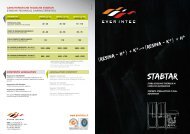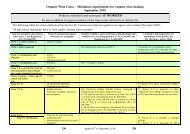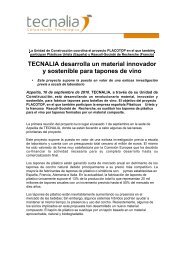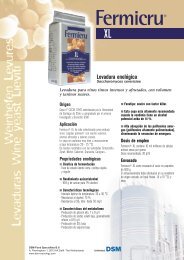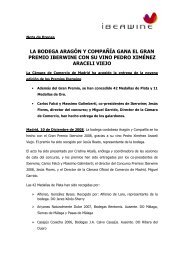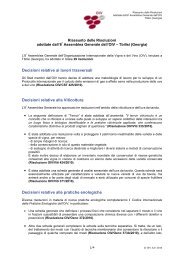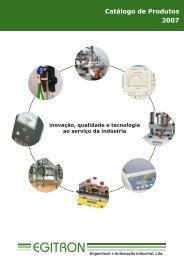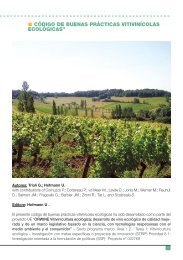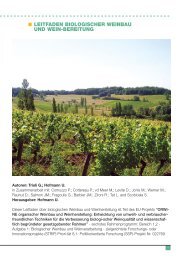Codice di buone pratiche per la viticoltura e l'enologia ... - Infowine
Codice di buone pratiche per la viticoltura e l'enologia ... - Infowine
Codice di buone pratiche per la viticoltura e l'enologia ... - Infowine
You also want an ePaper? Increase the reach of your titles
YUMPU automatically turns print PDFs into web optimized ePapers that Google loves.
2.2.5. Macerazione<br />
Fig. 67: Vini rossi – possibilità macerative<br />
Principi generali<br />
La macerazione è necessaria nel<strong>la</strong> produzione dei vini rossi <strong>per</strong> l’estrazione dal<strong>la</strong> buccia <strong>di</strong> colore e<br />
struttura. Qualunque sia <strong>la</strong> strategia <strong>di</strong> macerazione usata, l’ammontare dei componenti che dal<strong>la</strong><br />
buccia si <strong>di</strong>ssolveno nel vino, rappresenta solo una frazione del potenziale totale.<br />
Durante <strong>la</strong> macerazione, <strong>la</strong> preoccupazione maggiore è quel<strong>la</strong> <strong>di</strong> essere il più selettivi possibile.<br />
Assieme ai composti positivi come antociani, polisaccari<strong>di</strong>, aromi e alcuni minerali, le bucce acerbe<br />
possono liberare tannini aggressivi, note erbacee, aci<strong>di</strong>tà anomale e le uve ammuffite possono<br />
essere fonte <strong>di</strong> enzimi ossidativi, glucani e aromi non gradevoli.<br />
Perciò, <strong>la</strong> strategia <strong>di</strong> macerazione <strong>di</strong>pende dalle caratteristiche specifiche delle uve trattate che<br />
devono essere rilevate nel dettaglio me<strong>di</strong>ante analisi chimiche e organolettiche.<br />
Quando si <strong>la</strong>vorano uve acerbe o ammuffite, lo scopo è limitare il passaggio <strong>di</strong> composti negativi<br />
mentre si cerca <strong>di</strong> favorire <strong>la</strong> presenza nel vino <strong>di</strong> colore e struttura. Questo è ottenuto, aumentando<br />
<strong>la</strong> <strong>di</strong>ssoluzione durante <strong>la</strong> fase acquosa me<strong>di</strong>ante l’uso <strong>di</strong> enzimi, riducendo le azioni meccaniche<br />
<strong>per</strong> limitare <strong>la</strong> <strong>la</strong>cerazione del<strong>la</strong> buccia e <strong>la</strong> formazione <strong>di</strong> feccia, ed evitando il contatto con l’ossigeno<br />
in modo da preservare il basso contenuto <strong>di</strong> colore e <strong>di</strong> aromi varietali.<br />
133




